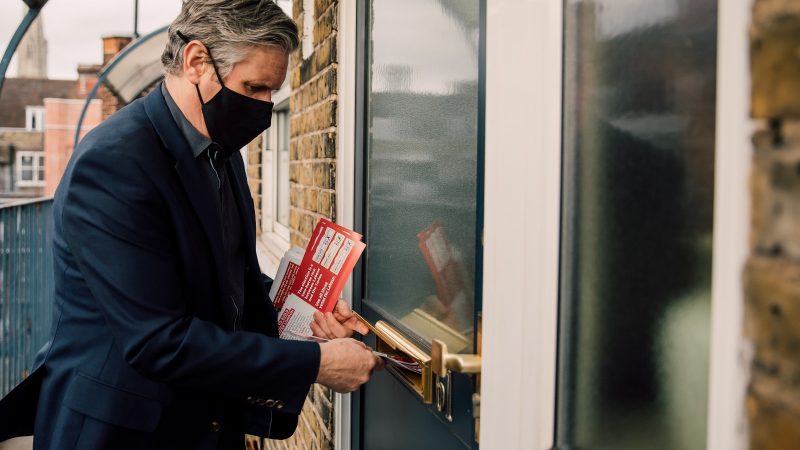
Keir Starmer is starting to define his political strategy, and his commitment to no alliances with the SNP and the pursuit of a Labour government are positive developments. But the immediate future direction is uncertain, and the need to build a broad electoral force with no second-class voters must be key. There should be no future neglecting voters who actually vote Labour, in favour of people who have abandoned the party. Regaining ‘Red Wall’ seats is a necessary but not sufficient task. Labour had them up to 2019 and still lost elections.
Labour faces unresolved issues and, if there is to be a drive for a Labour government, whether electoral reform at this time helps with the overall objective is questionable. Coalition governments are virtually inevitable to follow if proportional representation (PR) were instituted and coalitions are neither Labour governments nor popular with the voters. Coalitions have been formed under the first-past-the-post electoral model as David Lloyd George, Ramsay MacDonald and Nick Clegg proved. But they are rare, while under PR they are normal – and they were not popular. It is not accidental that all three politicians had their political careers ended, and the Tories won the elections that followed (1922, 1935 and 2015).
The next general election will be fought under the first-past-the-post system, and there is little sign that electoral reform is a major issue with the voters. It would be a gift to Tory strategists, who can point to a 2:1 majority against in the 2011 alternative vote referendum. While supporters of PR have the right to campaign for reform, Labour will have many challenges to overcome in a future election. Making PR an issue must be seen as a diversion at best and damaging at worst.
Essentially, PR helps small parties and leads to coalitions. It is not a magic bullet and poses more questions than answers for Labour, especially when linked to the idea of a ‘progressive alliance’. Whether the advocates of a progressive alliance can justify linking with the Lib Dems, who spent five years in coalition with the Tories as advocates of austerity when in government, or the Greens – now in coalition with the SNP in Scotland – is an open question.
But Starmer’s offer to paint a future “in primary colours” is ambiguous. If the primary colour is blue, this threatens a return to the Blue Labourism of the Miliband era. Starmer’s priority seems to be fixed on Red Wall seats and Tory voters but, even if the Red Wall seats return, Labour cannot win a parliamentary majority. A much wider support base is needed, and the results in Hartlepool and Chesham and Amersham do not suggest that this is coming on board. Labour risks falling between two stools, neither appealing to Tory ex-Labour voters nor to the centrist voters Starmer needs to win over.
The Blue Labour approach of the Ed Miliband era failed at the 2015 election. When faced with the superficially attractive nationalisms of the SNP and Tories, swing voters preferred them to a Labour Party that did not reject tactical alliances with Alex Salmond and the SNP. In Scotland, Labour lost 40 of its 41 seats and in England the Tory billboard campaign that depicted Salmond in charge of a Labour administration took voters from Labour. At least Starmer has rejected the SNP.
The progressive alliance ticket favoured by many in the PR camp misses the electoral point. There is no doubt that Labour has an uphill battle to win voters, but these are not just Tory voters. Labour must also win over SNP, Lib Dem and Green supporters. If, as some in favour of an alliance argue, there can only be one progressive alliance candidate per constituency – the outcome would be as undesirable as the Lloyd George-Tory ‘coupon‘ in 1918. Arguments over who got the coupon made the coalition unstable and led to its collapse. Worse, if Labour gives away votes and seats to its competitors it will never come anywhere near victory and may suffer even worse defeats.
Starmer is right to say that Labour has to look forward, and it is surprising that the constitutional commission and policy review that have been promised have been put on the back burner. It is essential to slim down the manifesto to focus on building a majority for Labour among progressive voters. Massive policy commitments have not worked in the past, turning out more policies is counterproductive when the party is unfocused and lacks a clear identity, and the key issue for Labour – that there is a widespread reluctance to see a Labour government as desirable – has yet to be addressed.
If Labour is serious about wanting to take governmental power, Starmer has more to do than paint in bright colours. Labour must define a mission statement based on what the voters tell it will meet their needs. Labour has to stop being a top-down party and make the voters the centre of its politics in ways the internet has now made possible.




More from LabourList
Nudification apps facilitate digital sexual assault – and they should be banned
Diane Abbott suspended from Labour after defending racism comments
Labour campaign groups join forces to call for reinstatement of MPs